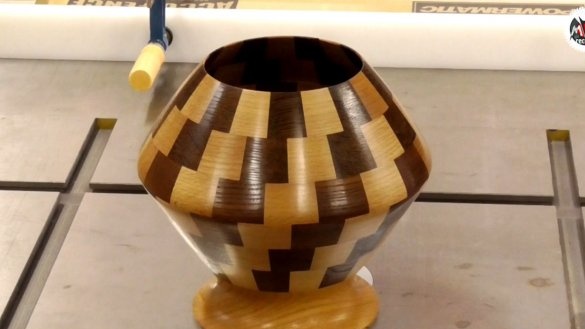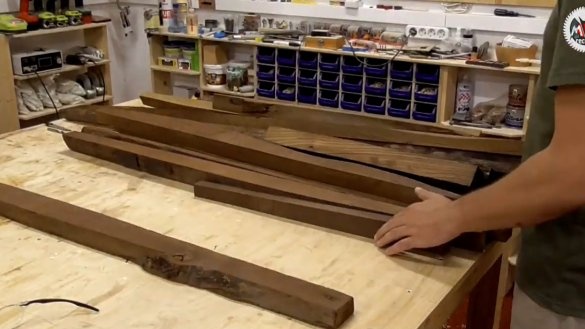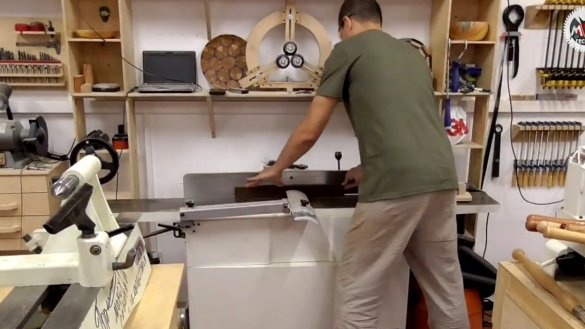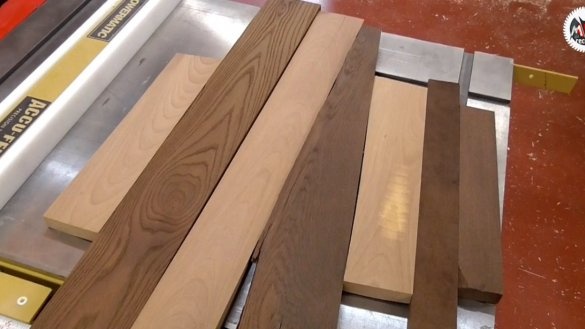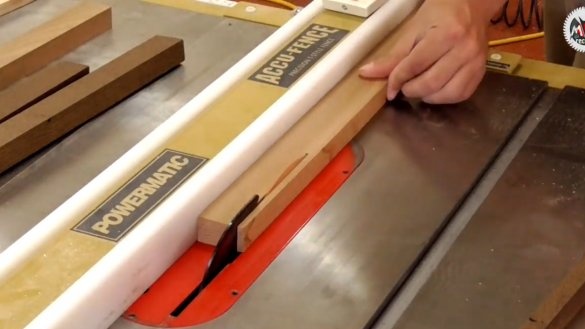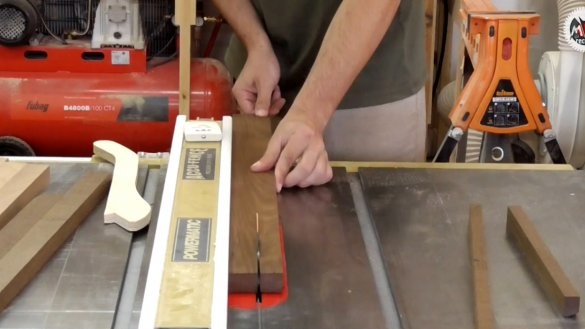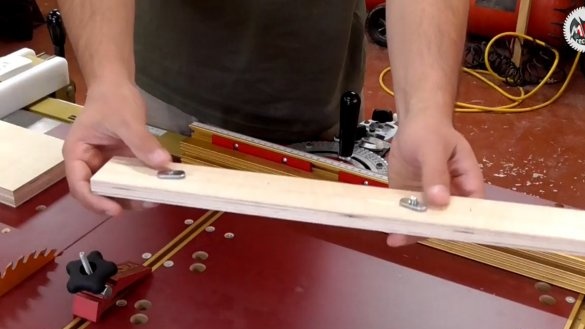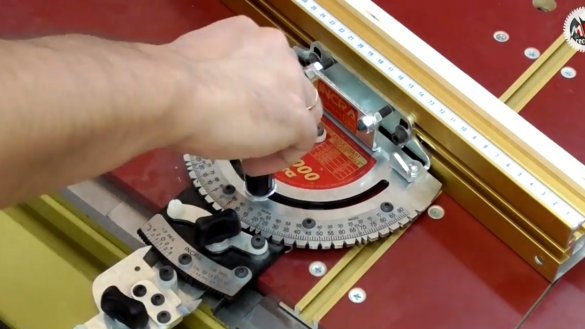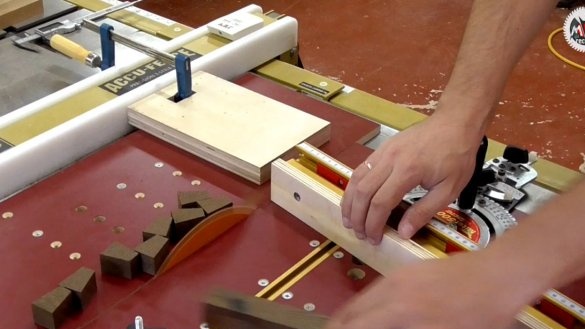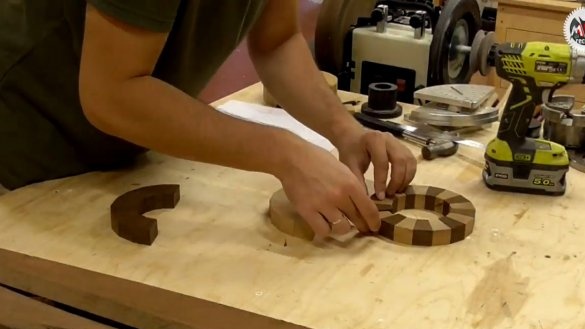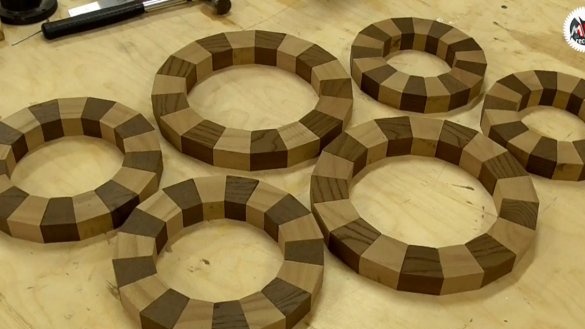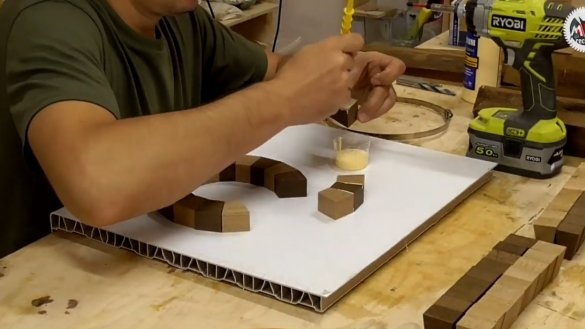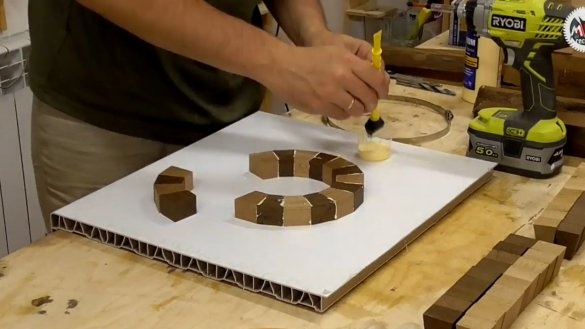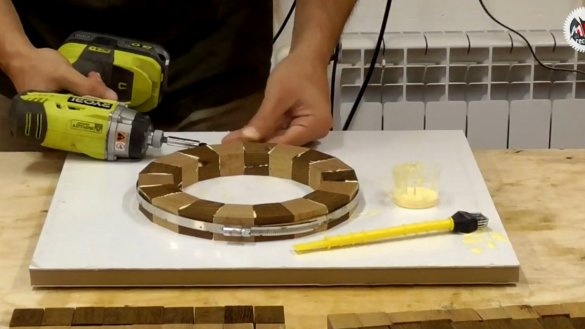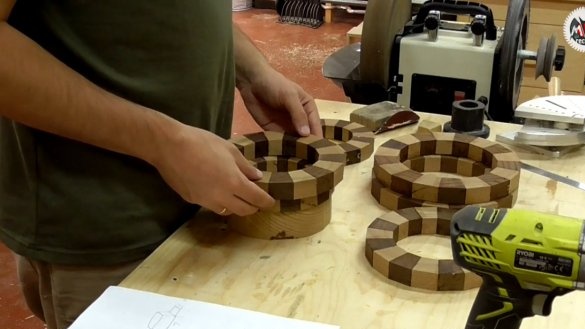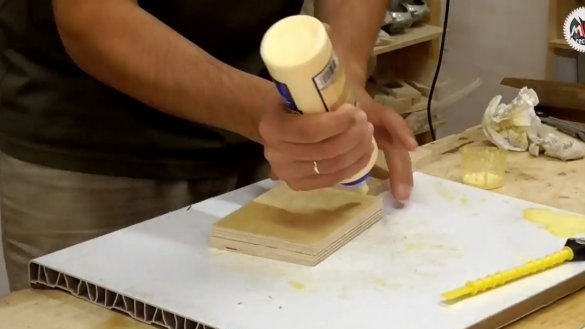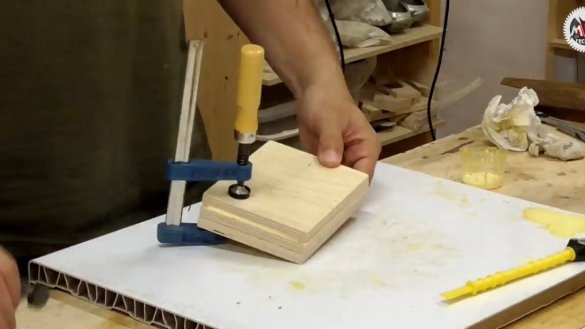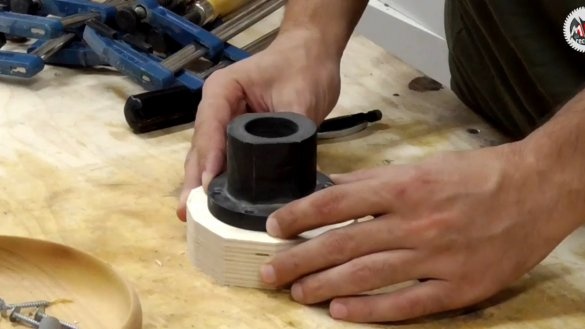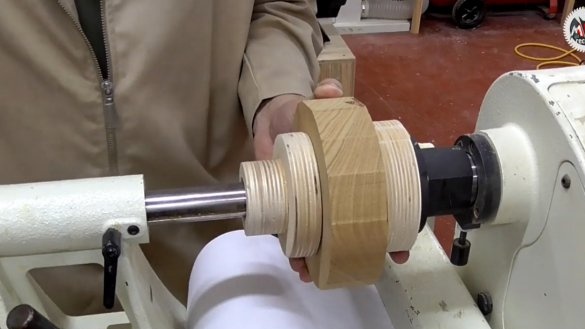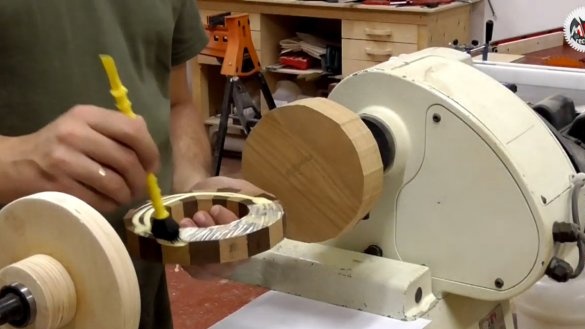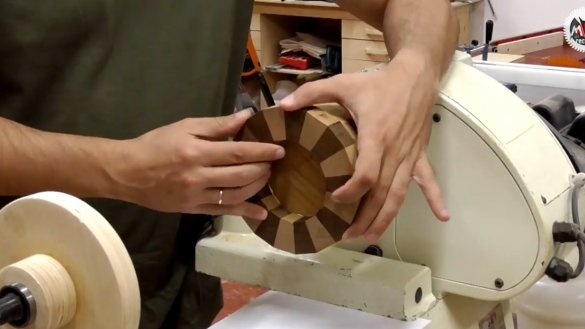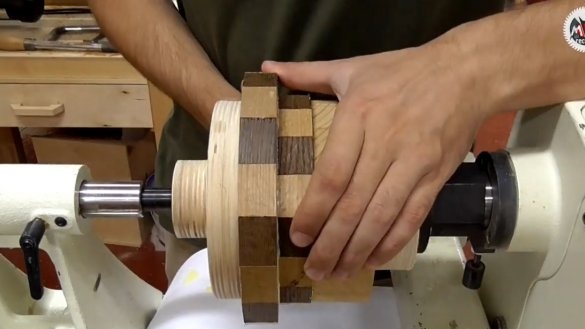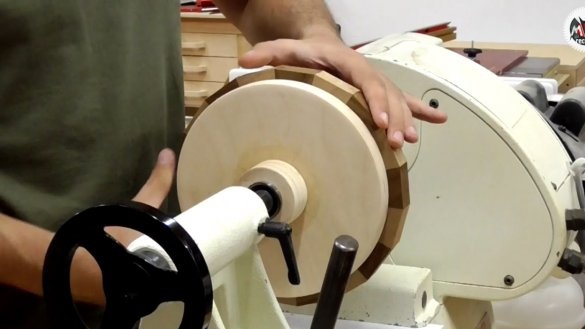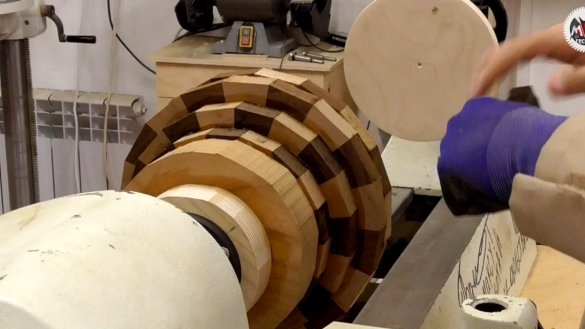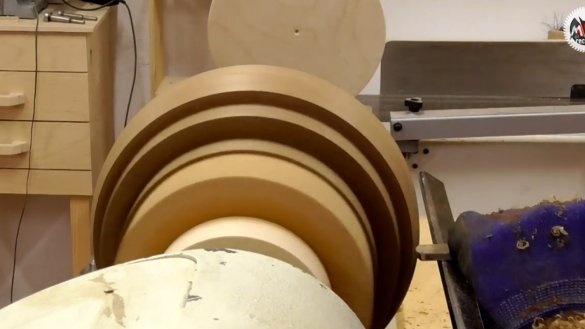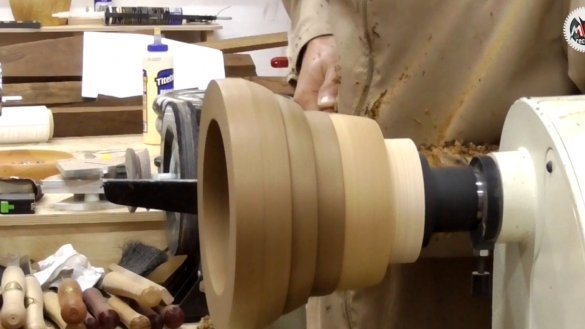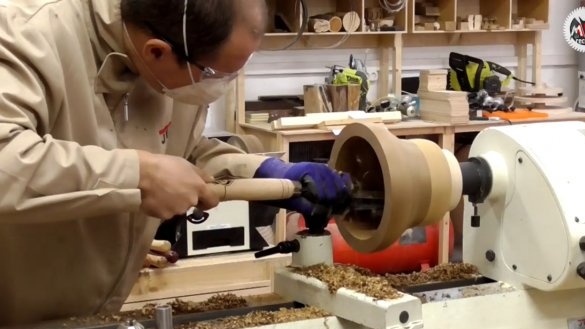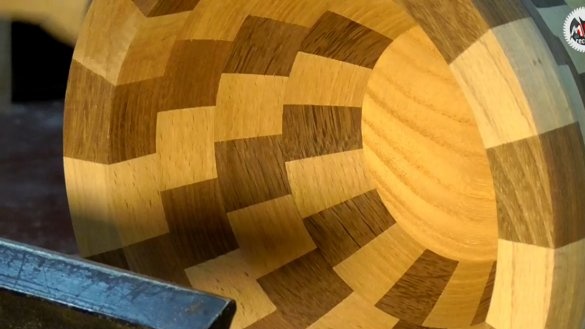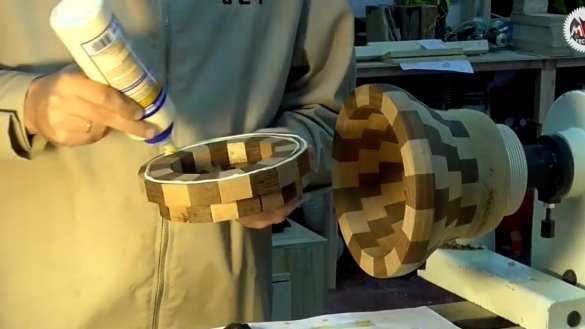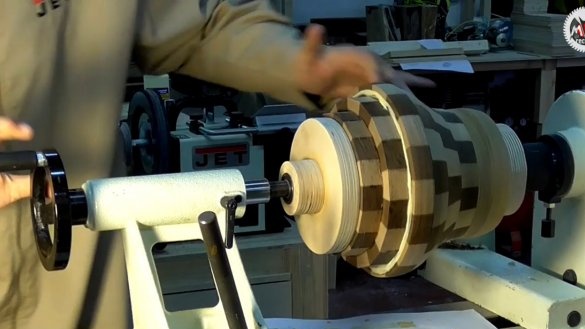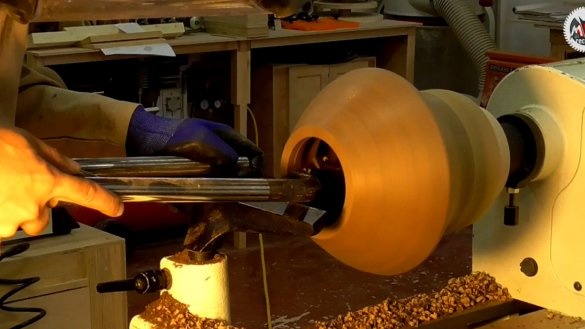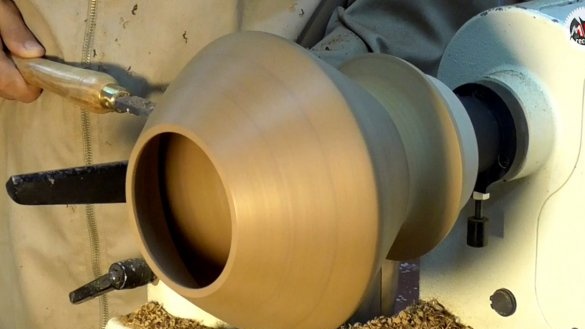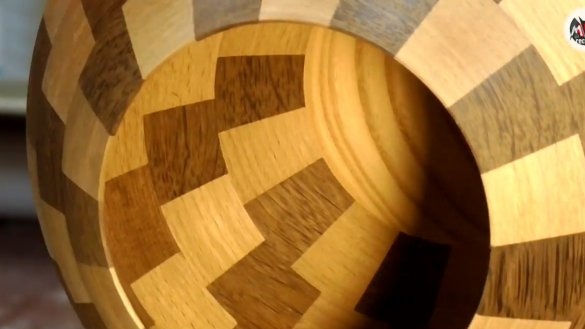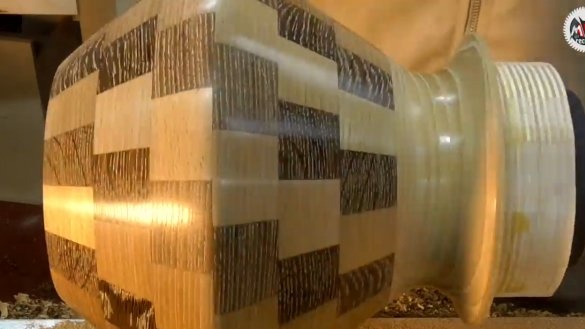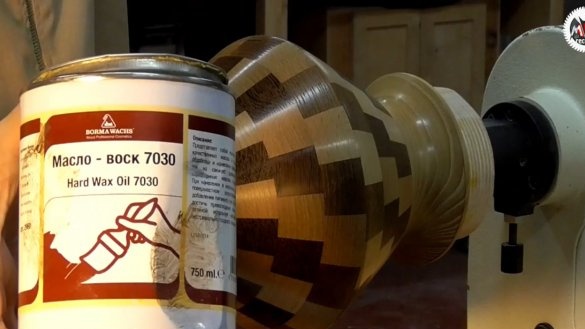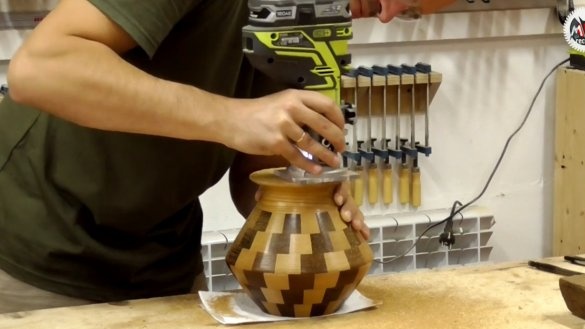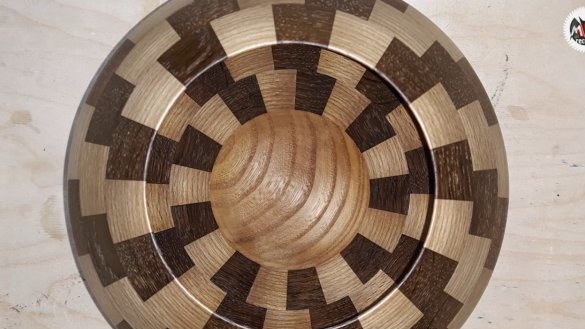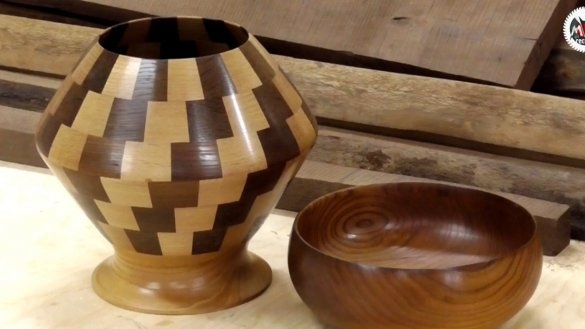In this article, Master, author of Maxim Kozlov’s YouTube channel, will show you how to make a small segmented vase.
For the manufacture of this homemade product, the author decided to apply several breeds of thermal wood of varying degrees of roasting.
The basis will serve as a trimming of a thermoworm.
Well, for the segments I selected a couple of small boards from a recently purchased batch and some trimmings, so purely for the experiment, since the product could well be lost during the turning process.
As light segments the choice fell on the thermal book of the smallest thermality, and for the dark one went the terminated Canadian oak, which in its appearance and texture is very similar to wenge.
A huge plus in segment turning is the price of the material. It is minimal here, shortcuts and marriage are always sold cheaply, and you can cut bars from them into segments without any difficulty.
In all the recently purchased by the author of a batch of wood, about a third consisted of just such material. This is not suitable for furniture makers, but almost everything goes to lathe or resin. So look for local carpentry, as there is always something to profit from in terms of scraps. It is also worth considering the size of production, because the larger it is, the larger the trimmings can be there. In this case, the cross-section of the bars is 25 by 30 mm, which was set by the drawing of this vase, but it is often possible to use a cross-section and less, due to the steepness of the bend line of your vase. Therefore, in this example, the material was still spent not quite rationally, but since it was an experiment and it was made from outright shorties. Again, the fact that there will always be applications for decoration or inlay.
To cut segments, the author used a movable table with an angular emphasis. We set 10 degrees on the stop, which corresponds to obtaining 18 segments in the ring. Then you need to fix the guide at the second point to get a clear setting for unlimited time and you can start slicing.
As you know, in products consisting of different segments, the highest class is not only the quality of processing, which is not so difficult to achieve with fibers, but the absence of glue joints. In this case, they really do not exist at all. Thus, it is possible to make rings of 30 and 40 segments without fear, the question is already different - do you have enough patience for this.
For gluing segment rings, the master adapted a kind of overlay on the desktop. Her role is performed by a small trim from a plastic window sill. By itself, it is quite even, and it is quite easy to clean the glue from it.
It is necessary to assemble segmented products on the most even surface and carefully monitor that no segments come out when pulling together, otherwise, when grinding the workpiece, we will spend extra time and material, respectively.
The biggest risk in this case lies precisely in gluing the thermal tree. There is an opinion that it is necessary to glue this type of material exclusively with polyurethane adhesive such as PUR. The author decided to use Titebond II, since with all the accuracy, the hands will still be dirty a lot. And as you know, carpentry PVA is quite simple to wash, but PUR is still quite problematic.
For the base through which the products for subsequent processing will be screwed onto the faceplate, it is necessary to prepare this devicemade of three layers of plywood glued together.
Plywood 100% is more durable than any wood in this application, so square scraps of plywood, in which you can enter the diameter of your faceplate, should not be thrown away. We fasten the faceplate to the plywood boss and grind to get rid of the beating.
Then you can proceed to sticking the base and segment rings.
Finishing of plywood for segment rings is most conveniently done directly in the lathe itself, where it is possible to twist the product and get rid of beats as much as possible.
In this case, the role of a clamp or load is performed by only one tailstock, for which the author has made a group of clamping discs from plywood for segment rings of various diameters for a long time.
In this case, it was not possible to glue the whole product as a whole, since this is always limited by the physical size of the boring tool. But even with a boring of sufficient length, you still should not go deeper than the standard 5, maximum 6 rings 25 mm high, otherwise there is a rather high risk of vibration and, as a result, a complete loss of the workpiece. Therefore, the author first glued 4 rings to the base of the array and 2 rings separately between themselves, which were glued after the internal groove, especially since these rings were already narrowing.
The process of turning segments is always high, as the cutter always moves along the fibers. In this case, working with a material such as a thermal tree has not changed anything at all. No chips, only dark dust in half with chips.
During rough grooves, it is necessary to strive to process one of the sides, for example, the outer one, so as to completely remove the angularity and there was the opportunity to immediately go directly to the internal work. Thus, we get the maximum useful thickness of the product and it doesn’t happen that on the outside we have already given the finish shape, but during internal work it turned out that somewhere the thickness is already insufficient and you have to leave unprocessed faceted transitions between the rings inside. Therefore, having processed the inside of the product completely and having a maximum of useful thickness, you can glue the remaining rings.
In the strength of the entire workpiece, the re-sticking of the rings themselves, whose quality depends on the surface cleanliness, is by no means the last.
When turning the last rings, the master brought the thickness of the product to a couple of millimeters. This was just the final test of the thermal tree in this product, since the elements of the last ring were no longer included in the general masonry, and theoretically, if the gluing was not very high quality, they could fly apart, but as you can see everything is in order.
In general, the master was very pleased with this material and its contrasting capabilities that it provides for creativity. Prior to this, a dark shade began approximately with an American nut, the cost of which is usually several times higher than the same heat-treated ash, thermal beech or oak. So thermal wood can be considered a good alternative to some dark exotics.
The inner part did not need polishing, everything is very decent there, so to speak, from under the cutter. Well, the external side has yet to bring to shine.To do this, it is necessary to cover the product with a universal oil-wax, which, among other things, has a rather pleasant aroma and also does not leave a smell of thermal wood and trace.
That's all. Thank you for attention. See you soon!
Author's video:

